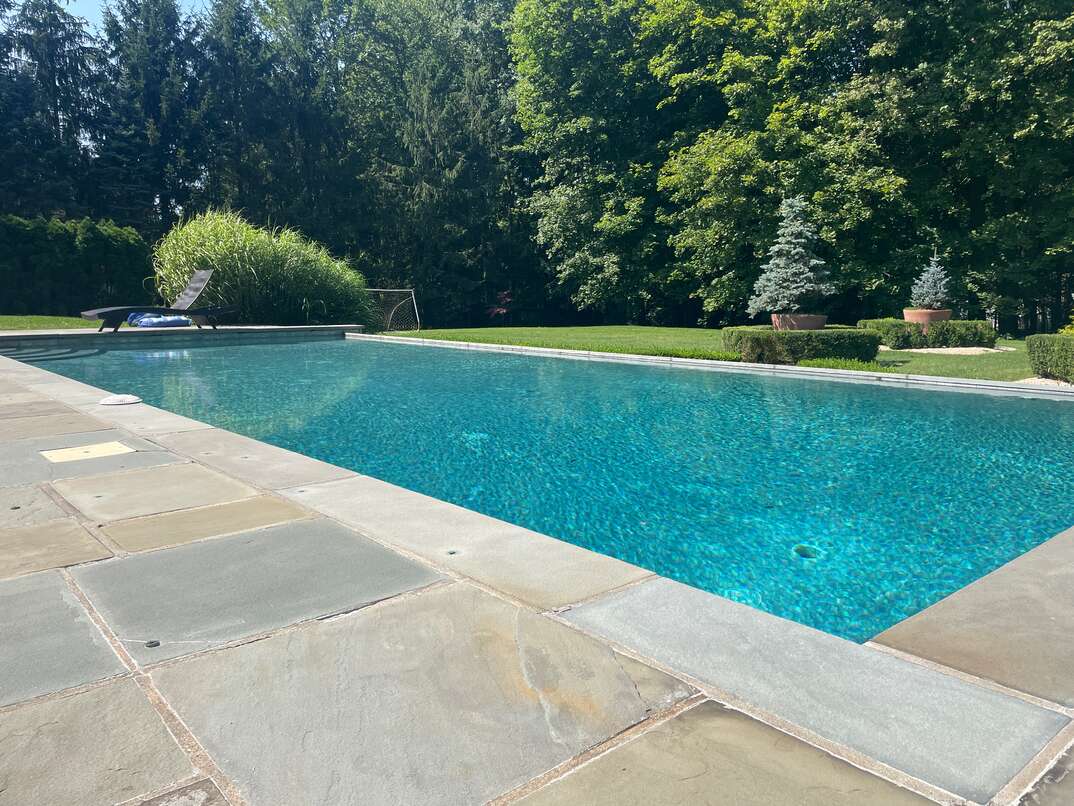Shockingly Easy: 7 Steps to Shock Your Pool

How To Shock A Pool
Ah … there are few things better than heading outside on a perfect summer day and jumping in your crystal-clear swimming pool. And there are few leisure-time disappointments greater than finding that your swimming pool water is green.
Owning a swimming pool is a wonderful luxury that brings countless hours of enjoyment and relaxation. To ensure your pool remains clean, clear, and safe for swimming, regular maintenance is essential. One crucial aspect of pool maintenance is the process of "shocking" your pool when it begins to discolor due to algae growth and/or the buildup of other contaminants.
Let's delve into what it means to shock a pool, what pool shock is, how often you should shock your pool, and provide step-by-step instructions on how to perform this important task.
What does it mean to shock your pool?
Shocking your pool refers to the process of adding a high dose of chlorine or other chemical agents to the water. This elevated chlorine level helps eliminate contaminants such as algae, bacteria, sweat, urine, and other organic matter that accumulate over time. By raising the chlorine level dramatically, you effectively sanitize the water, eliminating potential health hazards and restoring clarity to your pool.
What is pool shock?
Pool shock is a concentrated form of chlorine or an alternative oxidizing agent used to achieve a temporary spike in chlorine levels within your pool. It comes in various forms, including granules, liquid, and even non-chlorine shock options. The choice of shock depends on personal preference, pool type, and water conditions. Always consult the manufacturer's instructions or seek professional advice to determine the most suitable shock for your specific pool.
How often do you need to shock a pool?
The frequency of shocking your pool depends on a few different factors, such as pool usage, weather conditions, and water quality. Typically, it is recommended to shock your pool every 1 to 2 weeks during the swimming season. However, certain situations may require more frequent shocks, including heavy rainfall, extreme temperatures, frequent pool parties, or if your pool shows signs of algae growth or cloudy water.
Step-by-step instructions for shocking your pool:
- Test the water: Start by using a reliable pool testing kit to measure the current chlorine level, pH, alkalinity, and other chemical parameters. This information will help you determine the appropriate amount of shock needed.
- Prepare the shock: Follow the manufacturer's instructions to prepare the shock treatment. If using granules or powder, dissolve the shock in a bucket of water to ensure even distribution. Use protective gloves and eyewear when handling pool shock to prevent any contact with your skin or eyes.
- Adjust pH and alkalinity if necessary: Before shocking your pool, ensure the pH and alkalinity levels are within the recommended range. If adjustments are needed, use pH increasers or decreasers and alkalinity balancers according to the manufacturer's instructions.
- Add the shock treatment: With the pool's circulation system running, slowly pour the shock treatment around the perimeter of the pool. Start from the deep end and move towards the shallow end. If using a liquid shock, distribute it evenly by walking around the pool.
- Brush and circulate: Use a pool brush to gently scrub the pool walls and floor to help disperse the shock treatment and remove any clinging algae or bacteria. Allow the pool's circulation system to run for several hours to distribute the shock evenly throughout the water.
- Wait and retest: After adding the shock, wait for the recommended time specified by the manufacturer, usually around 8 to 12 hours. Retest the water using your pool testing kit to ensure the chlorine levels have returned to the safe range of 1-3 ppm (parts per million).
- Additional steps: If the water remains cloudy or shows signs of algae growth after shocking even if the chlorine levels are correct, you may need to use an algaecide or clarifier to set things right. Remember to follow the manufacturer's guidelines and recommendations for best results.
Shocking your swimming pool is a vital part of pool maintenance that ensures a clean, clear, and safe swimming environment. By understanding the process of shocking, the purpose of pool shock, and how often to perform this task, you can keep your pool in optimal condition.
Remember to test your pool water regularly to determine if and when shocking is needed and the appropriate amount of shock to use. Follow the manufacturer's instructions for the specific shock treatment you choose, and wear protective gear when handling chemicals. Adjust the pH and alkalinity levels if necessary before adding the shock.
By brushing the pool surfaces and allowing the circulation system to run for a few hours, you can ensure the shock treatment is evenly distributed and that any stubborn growth on the pool walls gets removed and killed by the shock. Be patient and wait for the recommended time before retesting the water to ensure the chlorine levels have returned to the appropriate range.
By incorporating regular pool shocking into your maintenance routine, you can take away any "shocks" you may get by finding that your pool water is discolored and unsuitable for swimming on those beautiful summer days. Happy swimming!


